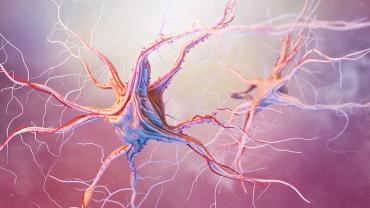
The perception of pain is a complex process involving neurotransmitters, receptors, memory, and emotions. Chronic pain refers to pain experienced for a duration longer than 3 months and is typically associated with pathologies or injuries. Recent research has explored the potential role that the gut microbiota may play in the modulation of inflammatory and neuropathic pathways associated with pain.
The enteric nervous system (ENS) refers to the neuronal network in the gastrointestinal (GI) tract. The ENS is formed by approximately the same amount of neurons (200 to 600 million), as in the spinal cord. Molecules such as serotonin are locally secreted in the ENS by enteric cells and certain microbes, and they may play a role in brain-gut communication. In addition, the vagus nerve is an important communication route in the gut-brain axis.
Metabolites of microbes, such as short-chain fatty acids (SCFAs), may influence the gut-brain axis. Microbes may also influence the synthesis or metabolism of neurotransmitters or generate certain neuroactive substances. Bifidobacterium and Lactobacillus have been shown to produce gamma-aminobutyric acid (GABA), a neurotransmitter that may cross the blood-brain barrier (BBB). Other neurotransmitters produced in the gut may not pass through the BBB, but may still act on the ENS.
A recently published review article by Morreale and colleagues explored the relationship between pain perception and the gut microbiome described in current literature. The authors report that butyrate, an SCFA produced by gut microbes, may play a role in the modulation of inflammatory visceral pain. This is believed to be through butyrate in its role to help support the body’s response to bowel inflammation and promote mucosal repair.
SCFAs may also help support vagus and sympathetic nerve signaling and support receptor health for certain immune and enterochromaffin cells. They are believed to regulate mechanisms relating to neuronal, immune, epigenetic, and endocrine functions.
Changes in brain volume in regions associated with pain processing have been observed in germ-free (GF) mice. The restoration of sensory neuron function has been observed in studies involving the colonization of GF mice. Lactobacillus rhamnosus (L. rhamnosus) (LR-2) has been shown in murine studies to help reduce pain severity and other parameters associated with osteoarthritis. It has also been shown to modulate interleukin-(IL)-10, a cytokine associated with decreased pain sensitivity.
Clinical studies involving irritable bowel syndrome (IBS), a condition associated with a high incidence of gut barrier dysfunction, have correlated a balanced microbiome with improvements in pain processing. Individuals with IBS have also been shown to have altered activity in pain signaling pathways.
Trials involving probiotic supplementation have shown improvements in certain parameters relating to pain. One clinical trial showed that L. rhamnosus GG reduced certain inflammatory cytokines and improved the severity of abdominal pain in children with IBS. Another trial involving eight probiotic strains showed an improvement in quality of life and a reduction in symptoms related to IBS in children as compared to a placebo. Supplementation with L. reuteri DSM 17938 significantly reduced the frequency and intensity of abdominal pain in six randomized controlled pediatric studies.
The gut microbiome affects neurological and brain function in many ways. Although more information is needed before conclusions can be made, recent research suggests that probiotics and fermented foods may help support the body’s response to pain.
By Colleen Ambrose, ND, MAT